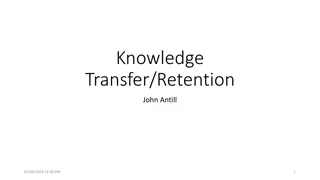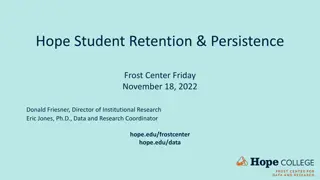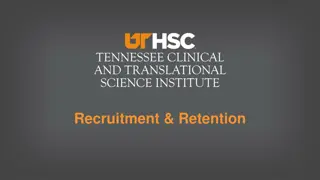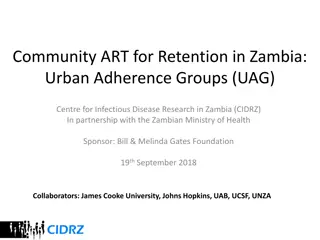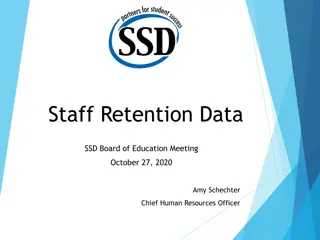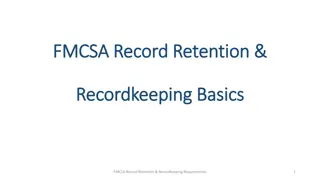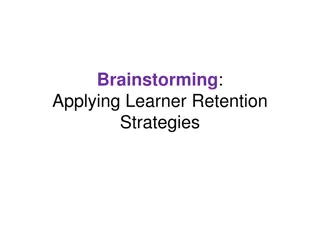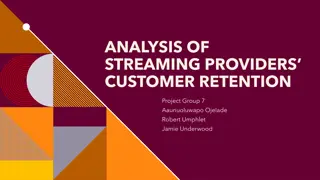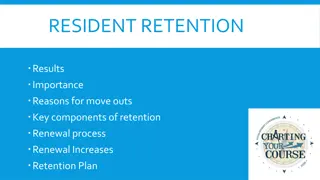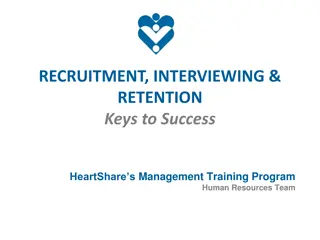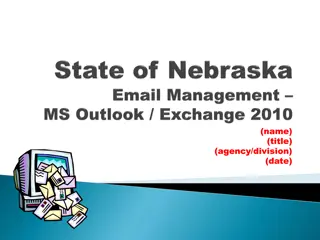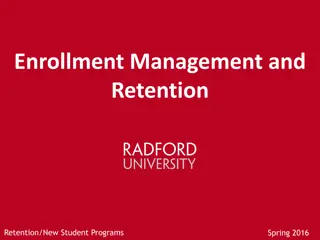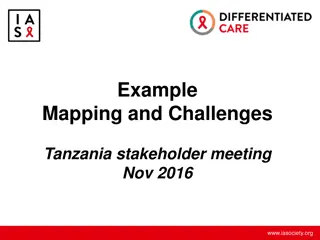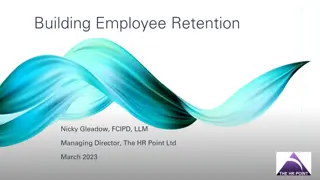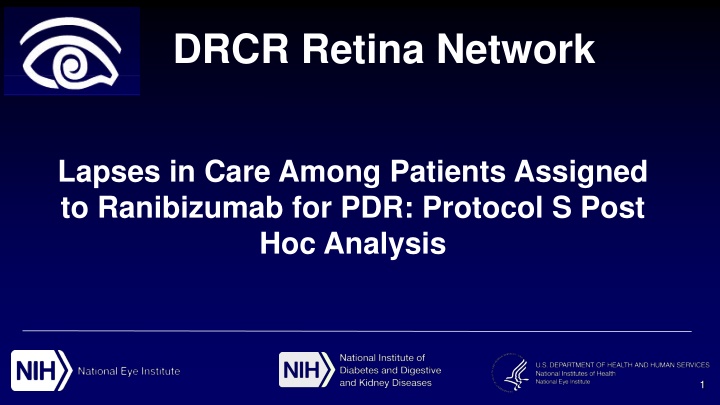
Lapses in Care for Patients on Ranibizumab in Retina Network Studies
Explore patterns of visit completion and factors related to care lapses among patients assigned to ranibizumab in the Retina Network Studies. This analysis focuses on the treatment protocol, follow-up schedules, and patient profiles in the context of ranibizumab therapy for PDR.
Uploaded on | 1 Views
Download Presentation

Please find below an Image/Link to download the presentation.
The content on the website is provided AS IS for your information and personal use only. It may not be sold, licensed, or shared on other websites without obtaining consent from the author. If you encounter any issues during the download, it is possible that the publisher has removed the file from their server.
You are allowed to download the files provided on this website for personal or commercial use, subject to the condition that they are used lawfully. All files are the property of their respective owners.
The content on the website is provided AS IS for your information and personal use only. It may not be sold, licensed, or shared on other websites without obtaining consent from the author.
E N D
Presentation Transcript
DRCR Retina Network Lapses in Care Among Patients Assigned to Ranibizumab for PDR: Protocol S Post Hoc Analysis 1
Background DRCR Protocol S for PDR: PRP vs ranibizumab injections Mean VA with ranibizumab non-inferior to PRP over 5 yrs Less VF loss, ME, retinal detachments, vitrectomies over 5 yrs UK CLARITY: PRP vs aflibercept injections Mean VA with aflibercept superior to PRP (4 letters) at 1 yr Less ME, vitreous hemorrhage, adverse effects on VF, binocular VA Anti-VEGF therapy requires more patient visits than PRP Protocol S ranibizumab: median 43 visits, 19 PDR injections Protocol S PRP: median 21 visits, 50% no additional PDR treatment 2
Objective Describe patterns of visit completion in patients assigned to ranibizumab in Protocol S Identify factors associated with long lapses in care 3
Methods Eligibility and Treatment Assignment Eligibility VA 20/320 or better No prior treatment for PDR Random assignment to PRP or ranibizumab 190 eyes assigned to ranibizumab 170 survived to 5 years => included in this analysis 4
Ranibizumab Treatment Protocol Initial treatment Injections Q4 weeks through 24 weeks (injections deferred at 16 and 20 weeks if no NV) At 24 weeks, injections Q4 weeks continue unless no NV or NV stable after 2 consecutive injections Restart a series of injections when NV worsened 5
Ranibizumab Follow-up Schedule Year 1 : Every 4 weeks Year 2 and later: Every 4 or 8 weeks if under treatment Every 16 weeks if under observation (extended to 20 weeks to accommodate annual study visits) 6
Lapse In Care by Scheduled Interval No Lapse Short Lapse Long Lapse Scheduled Visit Interval 4 6 6 40 (Weeks) 8 10 6 36 16 20 4 28 20 24 4 24 No. of Weeks Since Last Completed Visit 7
Patient Profile Total number of participants 170 Age, years, median 51 Female 45% Non-Hispanic white 52% Type 2 diabetes 73% HbA1C, median 8.6% High-risk PDR ( level 71) 36% 8
Time to First Lapse in Care and Dropping Out Any lapse in care Long lapse in care Dropping out 100% 85% Cumulative Proportion 80% 55% 60% 40% 29% 20% 0% 0 52 104 156 208 260 Visit in Weeks 170 170 170 93 141 155 52 115 145 37 100 134 32 85 126 27 78 120 Any lapse in care Long lapse in care Dropping out 9
Number of Episodes of Lapse in Care Short lapses 0 1 2 3 15% 19% 12% 54% 1st long lapse resulted in dropout in 27% Long lapses 0 1 2 45% 28% 28% 27% dropped out later after returning from a long lapse 10
Visual Acuity Year 5 Completers Lapses in Care Short only 50 P Value None 26 1 Long No. of Participants Baseline VA Median, letters 44 80 80 78 Snellen equivalent 20/25 20/25 20/32 VA Change at 5 years Median (Q1, Q3) 15-letter loss, N (%) +4 (-1, +9) 1 (4%) +5 (+1, +10) 1 (2%) -2 (-6, +11) 6 (14%) .05 .07 11
PDR-related Outcomes 5 Year Completers Lapses in Care None Short only P Value 1 Long No. of Participants 26 0 50 44 NVG or NVA, N (%) 2 (4%) 5 (11%) .12 TRD, N (%) 0 4 (8%) 3 ( 7%) .47 VH, N (%) 8 (31%) 26 (52%) 29 (66%) .02 Vitrectomy, N (%) 1 ( 4%) 8 (16%) 8 (18%) .23 Timing of the PDR-related outcomes did not appear directly related to the timing of a lapse in care 12
Baseline Risk Factors: Long Lapse in Care Study Eye Factor N Long Lapse, n (%) P* VA letters, (Snellen) 83 38 (46%) 79 (20/25 or better) .02 <79 (20/32 or worse) 87 56 (64%) PDR features NVD or NVE only 108 51 (54%) .03 NVE and NVE 57 39 (68%) Prior laser for DME No 142 85 (60%) .01 Yes 28 9 (32%) C-statistic = 0.68 * P value from multivariable logistic regression model including all 3 factors 13
Limitations Unknown whether dropouts sought care outside of the DRCR site. No information on the outcomes of the dropouts. Efforts to facilitate follow-up and financial incentives in Protocol S follow-up likely better than can be achieved in most clinical practices 14
Protocol S Factors Influencing Follow-up Enrollment of only patients expected to be able to complete follow-up for at least 3 years No charge for ranibizumab to patients Payment ($25-$50) for each study visit Intensive efforts by clinic coordinators to schedule and remind patients of visits Telephone calls, certified letters, 3rd-party search firm when patients did not complete visits/communicate 15
Conclusions Among patients assigned to ranibizumab for 5 years: 15% - no lapses in care 30% - only short lapses in care, not associated with worse 5-year VA 55% - 1 or more long lapse in care, associated with more VA loss at 5 years 30% - dropped out Patients with lapses may have more PDR-related events, but the direct effect of a lapse is not clear 16
Conclusions Risk factors for a long lapse identified, but not highly predictive Worse baseline VA Both NVE and NVD No prior laser treatment for DME Most (~75%) patients return after their first long lapse, providing opportunity for counselling 17
DRCR Retina Network Thank you! 18



